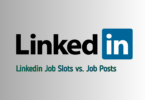A strong human resource development (HRD) program can raise employee satisfaction while boosting business productivity and profitability.
When considering a new job, HRD is one of the essential changes employees look for.
When employees are exposed to new skills, information, and practices regularly, it helps them feel like their organization is committed to them.
This fosters a more devoted workforce and makes them more accepting of the change.
Human resource management, known as human resource development, deals mainly with the education and training of people within the company.
The training that takes place once a person is hired, the possibilities for learning new skills, the distribution of resources that are helpful for the employee’s tasks, and any other developmental activities are all considered part of human resource development.
Read on as we throw more light on this.
SEE ALSO: Human Resources (HR) Generalist at Alan & Grant
What Is Human Resource Development?
Human resource development (HDR) is the coordinated application of learning and career development initiatives to enhance individual or group performance and overall organizational effectiveness.
Through structured learning activities, it helps employees build the competencies they need to accomplish their current tasks and prepare them for future ones.
The goal of human resource development (HDR) is to balance an organization’s and an individual’s demands.
The HR department has always focused on finding the best candidate for the position and keeping them on board.
Still, HRD places more of a priority on inspiring and advancing personnel.
Therefore, HR departments must set policies and initiatives to support employee development and organizational growth.
How Does Human Resource Development Work?
There are numerous chances for organizations to enhance their human resources both inside and outside of the office.
Human resource development can start as soon as you onboard new staff and can be formal or informal.
Informal education could consist of:
- Managerial mentoring
- Mentoring by more experienced workers
- Working with a highly skilled colleague
Formal development could consist of:
- Classroom instruction
- University courses
- Planned changes to the organization
- Internal training conducted by employees or a hired facilitator or consultant
All of these are covered by healthy organizations aware of the potential of human resource development.
Imagine that your business has recruited a new sales representative to demonstrate how human resource development might function.
As part of the onboarding process, employees receive formal training from staff members and informal mentoring from supervisors as they get the hang of things.
More possibilities for formal internal training become available as they advance in their career with you and are then put into practice regularly.
For example, perhaps you pair this new employee with a mentor who can guide them through any challenges and even help them pinpoint their unique strengths.
This allows the employee to be directed toward an advancement path specific to their skills and goals.
When workers advance in education, training, and experience if chosen for a leadership position, which might necessitate more specialized management training.
The employee has improved their efficacy and productivity over this time because of the organization’s focus on human resource development, which has helped your business’s bottom line and overall success.
SEE ALSO: Human Resource Administrator at PZ Cussons
Benefits of HRD
When properly implemented, HRD is a crucial strategy for attracting top talent to your company.
One of the opportunities employees look for when choosing employment is ongoing learning.
Giving employees the opportunity and support to keep growing their abilities can aid in employee motivation and retention.
In addition, employees are more likely to stick with the company and report better levels of work satisfaction if they feel they have gotten adequate training and assistance.
To ensure that the leadership of your business is knowledgeable and skilled, HRD also gives you the tools to find and train personnel for promotion.
Finally, a well-trained workforce operates more effectively, and when workers succeed, a business grows.
As a result, human resource development guarantees increased organizational effectiveness, assisting it in achieving its objectives.
What’s The Difference Between HRD And HRM?
While HRM and HRD are both concerned with a company’s human resources, there are a few significant distinctions:
- HRD is learning-oriented and focuses on enhancing employee performance, but HRM is maintenance-oriented and concentrates on administrative activities like managing personnel files and processing payroll.
- While HRD focuses on developing people for the firm’s benefit, HRM tries to increase employee productivity.
- All managers are responsible for HRD, but the HR department is responsible for HRM.
- While HRD focuses on motivating employees by helping them feel valued and addressing other higher-order demands, HRM encourages people through rewards and monetary incentives.
- While HRD focuses on developing people for the firm’s benefit, HRM tries to increase employee productivity.
SEE ALSO: Human Resources Business Partner at Airtel Nigeria
Conclusion
An organization’s effectiveness is increased by using the human resource development framework to assist personnel in enhancing their abilities, knowledge, and skills.
Now you know what HRD is and how it works, and we hope this piece gave you enlightenment.






